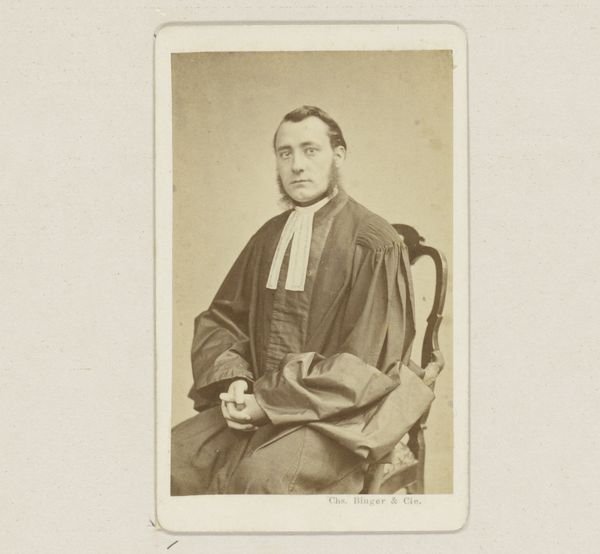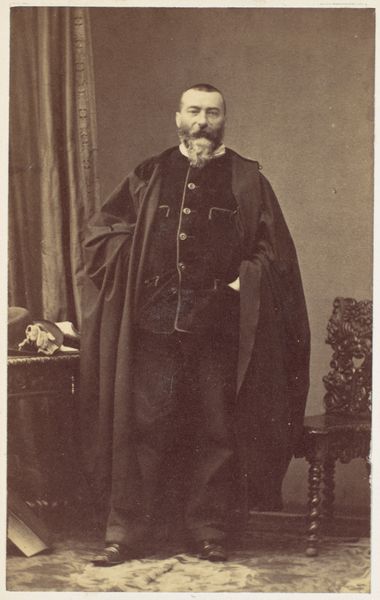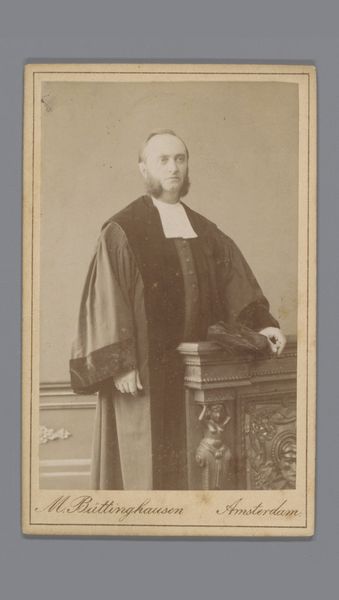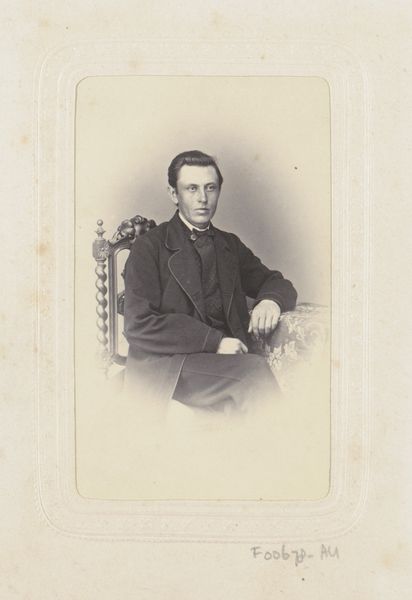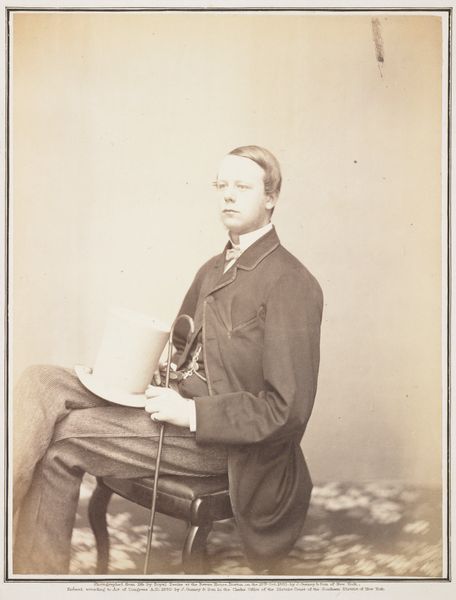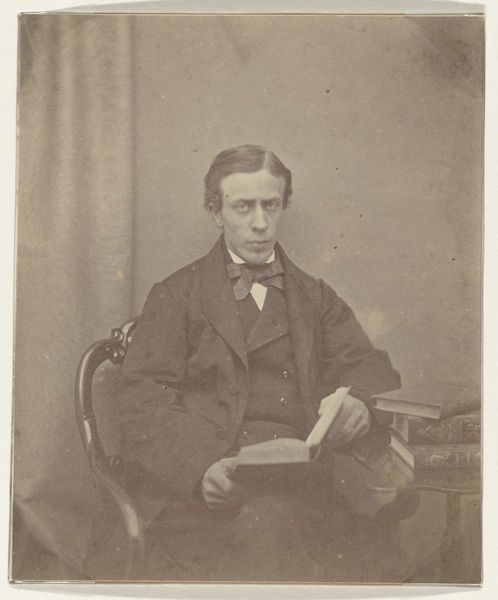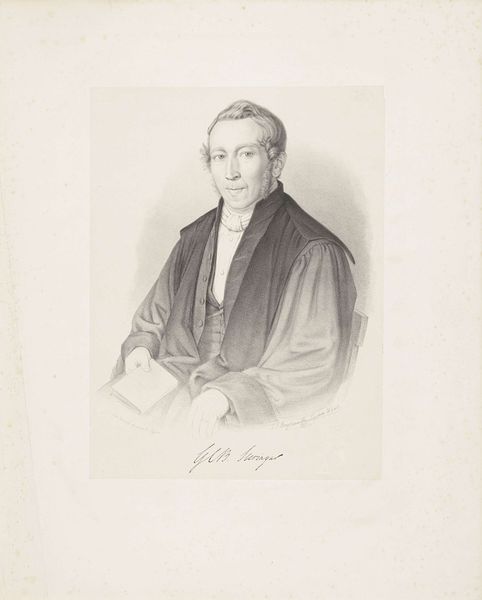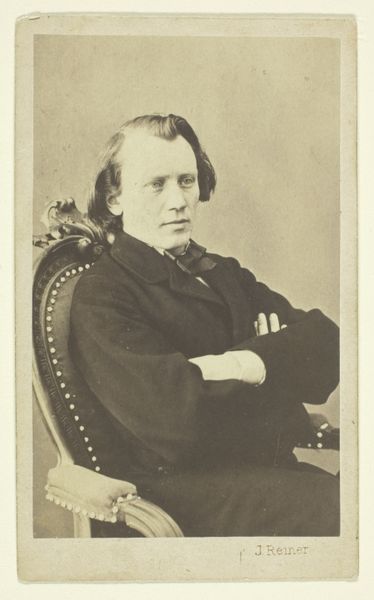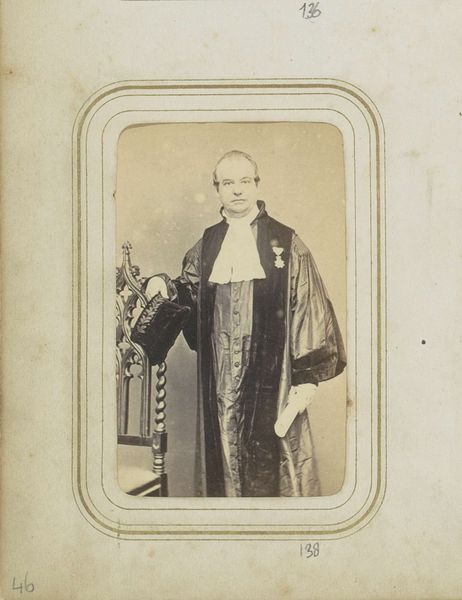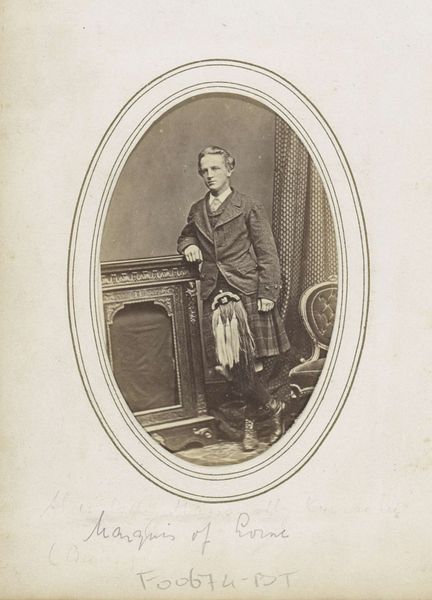
Portret van de Nederlands-Hervormde predikant Auguste Chrétien Joseph van Maasdijk (1842-1916) 1870 - 1880
0:00
0:00
bernardusbruining
Rijksmuseum
photography, gelatin-silver-print
#
photography
#
historical photography
#
gelatin-silver-print
#
history-painting
#
academic-art
#
realism
Dimensions: height 200 mm, width 158 mm
Copyright: Rijks Museum: Open Domain
Editor: Here we have "Portret van de Nederlands-Hervormde predikant Auguste Chrétien Joseph van Maasdijk (1842-1916)" created between 1870 and 1880 by Bernardus Bruining, a gelatin silver print housed in the Rijksmuseum. It’s quite striking how the oval format and sepia tones contribute to a sense of timelessness. What formal qualities stand out to you? Curator: The carefully controlled tonal range certainly guides the eye. Note how Bruining uses light and shadow to sculpt Van Maasdijk’s face, lending him both gravity and a certain presence. The sharp focus on the face contrasted with the softer rendering of the robes suggests a deliberate prioritization. What of the composition itself? Editor: The way he's positioned behind the open book, almost like he’s presenting it… it seems to speak to the importance of scripture. I also noticed his finger is pointing to the book... Does that gesture contribute anything meaningful to your viewing experience? Curator: Indeed. The index finger creates a vector, drawing our attention into the book. Formally, it acts as a visual bridge, connecting the figure to the object of study and to us, the viewers. His other hand mirrors that book's placement, leading your eyes down again. Observe the way the light glints on the open pages versus the shadowed binding. What impression do you get from this stark contrast? Editor: It’s like there is a play with surfaces: glossy, matte, the stark contrast between light and shadow, also the differences in texture that draw the eye. I'm seeing a visual balance. It gives the work a feeling of stability. Curator: Precisely. Bruining uses formal elements – light, shadow, texture, line, and composition – to create not just a likeness, but a constructed image imbued with authority and purpose. Editor: So, it is less about what is depicted and more about how it is depicted, to convey that authority and purpose. That is an interesting angle. Curator: Indeed. Analyzing the image this way shifts focus away from biographical detail and toward a deeper understanding of the photograph's intrinsic visual language and its compositional rhetoric.
Comments
No comments
Be the first to comment and join the conversation on the ultimate creative platform.

